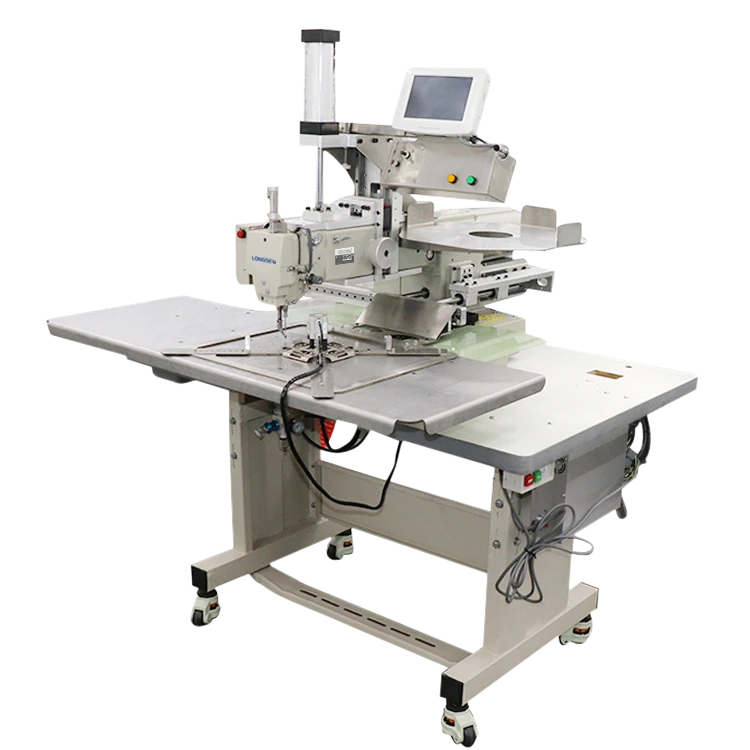what does serger machine do
What Does a Serger Machine Do?
A serger machine, also known as an overlock machine, is an essential tool for anyone involved in sewing, whether as a hobby or as a professional. Unlike a regular sewing machine that uses a single needle and a straight stitch to join fabric, a serger performs a multitude of functions that significantly enhance the quality and durability of sewn items. Understanding the capabilities of a serger machine can help sewists make more informed decisions when it comes to their sewing projects.
The Primary Functions of a Serger Machine
At its core, a serger machine is designed to trim, stitch, and finish seams in one go. Here are some of the primary functions that make a serger invaluable
1. Edge Finishing One of the most important features of a serger is its ability to edge finish fabric. It uses multiple threads, typically four, to enclose the raw edges of the fabric, preventing fraying. This is especially useful for knit fabrics that tend to unravel quickly. The clean finish not only enhances the appearance of the garment but also extends its lifespan.
2. Seaming A serger can sew seams more swiftly than a traditional sewing machine. It does this by simultaneously cutting the fabric edges while stitching, which allows for quicker assembly of projects. The stretch stitches created by sergers are particularly useful for sewing knits, providing the flexibility needed for garments like t-shirts and leggings.
3. Gathering and Ruffling Some serger machines come with specialized feet or settings that allow for gathering fabric or creating ruffles effortlessly. This can be a great time-saver for projects that require these decorative elements.
4. Flatlocking This unique stitch technique offered by sergers creates a flat seam that is ideal for decorative stitching or when sewing thicker fabrics. It lays the fabric flat, producing a polished look that is often seen in commercial clothing.
5. Adding Decorative Edges Some advanced sergers allow for decorative stitching, enabling sewists to enhance their projects with unique designs along the edges. This is particularly valuable for fashion sewing and home decor projects where aesthetic appeal is important.
Efficiency and Time-Saving Benefits
what does serger machine do

One of the most compelling reasons to use a serger machine is the efficiency it offers. In a typical sewing project, you might need multiple steps to finish seams, including cutting, stitching, and then finishing the edges with a zigzag stitch. A serger condenses these steps into one operation, saving you both time and effort.
Moreover, for production sewing environments, sergers can significantly increase productivity. For garment manufacturers, the ability to quickly finish edges while sewing seams allows for faster turnaround times on products.
Versatility in Application
Sergers are not just limited to garment construction; their uses extend to various types of sewing projects. Home decor items, such as curtains and pillow covers, can benefit from the clean, professional finish that sergers provide. Quilters can also use sergers for quick piecing and finishing quilt edges.
Additionally, adventurous sewists often employ sergers for craft projects, like making bags and accessories, where durability and finishing are crucial. The ability to work with various fabric types — from delicate chiffon to heavy denim — makes a serger a versatile addition to any sewing arsenal.
Learning Curve and Potential Challenges
While the benefits of a serger machine are substantial, it's important to note that there can be a learning curve associated with using one. Threading a serger can be intimidating for beginners due to the multiple spools and intricate paths the threads follow. However, many modern sergers come with color-coded threading guides that simplify this process.
Additionally, sergers do not replace standard sewing machines for every task. They excel at overlocking and finishing edges but are not ideal for topstitching or sewing buttons. Therefore, most sewists find value in having both types of machines in their toolkit.
Conclusion
In summary, a serger machine is a powerful and efficient sewing tool that can enhance the quality and speed of your projects. With its ability to finish seams, sew knits, and create decorative finishes, it is an indispensable asset for both amateur and professional sewists. As you explore the world of sewing, understanding the capabilities of a serger machine will empower you to produce beautifully finished garments and projects that reflect your style and craftsmanship.
-
Industrial Cylinder Arm Sewing Machine: Revolutionizing Heavy-Duty SewingNewsJul.28,2025
-
Cylinder Arm Sewing Machine: Perfect for Special Sewing ApplicationsNewsJul.28,2025
-
Cylinder Bed Sewing Machine: Essential for Sewing Complex MaterialsNewsJul.28,2025
-
Heavy Duty Sewing Machine: The Essential Tool for Industrial ApplicationsNewsJul.28,2025
-
Computerized Pattern Sewing Machine: Revolutionizing Precision StitchingNewsJul.28,2025
-
Heavy Duty Industrial Sewing Machine: Power Meets PrecisionNewsJul.28,2025
-
Leather Sewing Machine: The Industrial Standard for Tough MaterialsNewsJul.18,2025





























